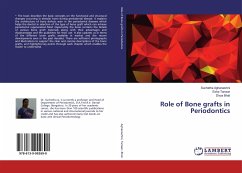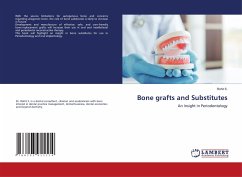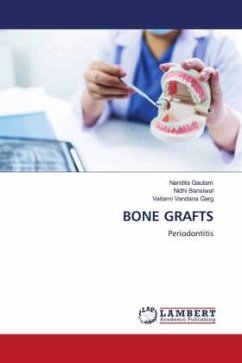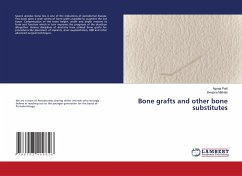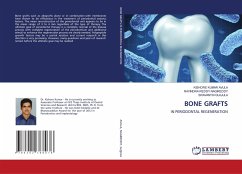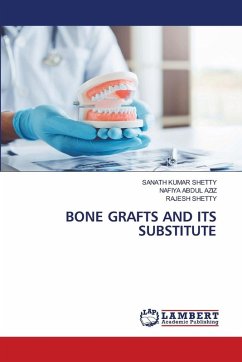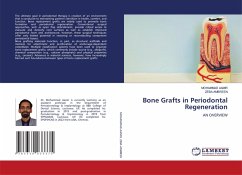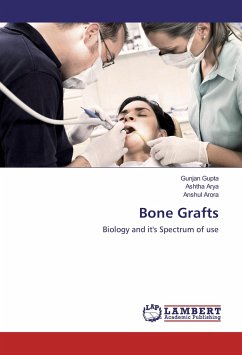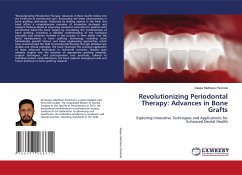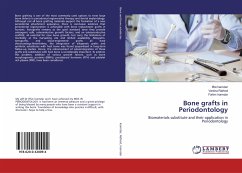
Bone grafts in Periodontology
Biomaterials substitute and their application in Periodontology
Versandkostenfrei!
Versandfertig in 6-10 Tagen
47,99 €
inkl. MwSt.

PAYBACK Punkte
24 °P sammeln!
Bone grafting is one of the most commonly used options to treat large bone defects in periodontal regenerative therapy and dental implantology. Although not all bone grafting materials support the formation of a new periodontal attachment apparatus, there is conclusive evidence that periodontal regeneration is achievable with bone replacement grafts in humans. Autografts remains as the gold standard since they provide osteogenic cells, osteoinductive growth factors, and an osteoconductive scaffold, all essential for new bone growth, but carry the limitations of morbidity at the harvesting site...
Bone grafting is one of the most commonly used options to treat large bone defects in periodontal regenerative therapy and dental implantology. Although not all bone grafting materials support the formation of a new periodontal attachment apparatus, there is conclusive evidence that periodontal regeneration is achievable with bone replacement grafts in humans. Autografts remains as the gold standard since they provide osteogenic cells, osteoinductive growth factors, and an osteoconductive scaffold, all essential for new bone growth, but carry the limitations of morbidity at the harvesting site and limited availability. Allografts, xenografts, and tissue-engineered grafts all have shortcomings.Nevertheless, the integration of allogeneic grafts and synthetic substitutes with host bone was found jeopardized in long-term follow-up studies. Hence, the enhancement of osteointegration of these grafts and substitutes with host bone is considerably important. To address this problem, addition of various growth factors, such as bone morphogenetic proteins (BMPs), parathyroid hormone (PTH) and platelet rich plasma (PRP), have been considered.



